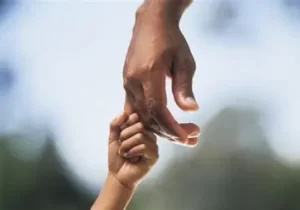Over the last decade, I have had the deep privilege—and immense responsibility—of working as a psychotherapist with children who have experienced complex trauma. Each child I’ve met carries a story that has shaped and moulded the way they view the world, themselves, and their relationships. These are not simple stories; for me, they were also teachers. They are layered, painful, and often expressed not through words, but through behaviours, misunderstandings, isolation, and deeply ingrained mistrust. My role is not to "fix" them, but to learn how to communicate in their trauma language —sometimes quietly, sometimes actively— so they can start trusting in another and themselves once again.

My practice is rooted in an understanding of developmental trauma, which recognises the profound effects of repeated and relational trauma in early life. These are not just individual traumatic events, but environments of ongoing threat, unpredictability, or neglect—often during critical developmental windows. The result is a nervous system that becomes wired for survival rather than connection, making traditional therapeutic approaches less effective unless adapted with care and sensitivity.
This is where Dyadic Developmental Psychotherapy (DDP) and the PACE model—Playfulness, Acceptance, Curiosity, and Empathy—have become central to my approach over the recent years. DDP allows me to create a safe relational space where the child can begin to trust and co-regulate with another. And PACE offers a simple method of practice that can be taught to parents, carers and networks, which can help to meet children with openness and non-judgment, even when their behaviours are challenging, unsafe or confusing.
In my work, many children are also navigating neurodiversity—including autism, ADHD, sensory processing differences, or speech and language delays. Here, a humanistic and tailored approach is essential. No two children are the same, and therapy cannot be a one-size-fits-all model. Some children need creative, non-verbal techniques; others require movement, body-based interventions, or environmental adjustments. What matters most is presence and attunement—two of the main characteristics of a safe attachment style and the foundations to a secure base attachment.
Children with behavioural challenges often face the double wound of experiencing trauma and then being labelled as "difficult", “rude” or "naughty". My work is to see beyond the behaviour to read between the lines and to translate what is often seen as aggression or avoidance into a message: “I don’t feel safe. I don’t know how to trust. I don’t expect you to stay.” When we respond to these messages with patience and consistency, children begin to show us who they are beyond survival.
After ten years, why do I keep doing this work? The answer is simple: because it is necessary. In a world that often pathologises or overlooks traumatised children, this work offers them something rare—a safe relational space where their pain is held and their journey to recovery opens. Therapy sessions may seem small in the eyes of professionals, but over time, they form a thread of stability that can change the trajectory of a child’s life.
I stay because every child I meet reminds me that healing is possible and that this often occurs within relationships. Because even after ten years, I continue to learn—from the children, from their resilience, and from the profound power of simply being present.

Hari om tat sat.